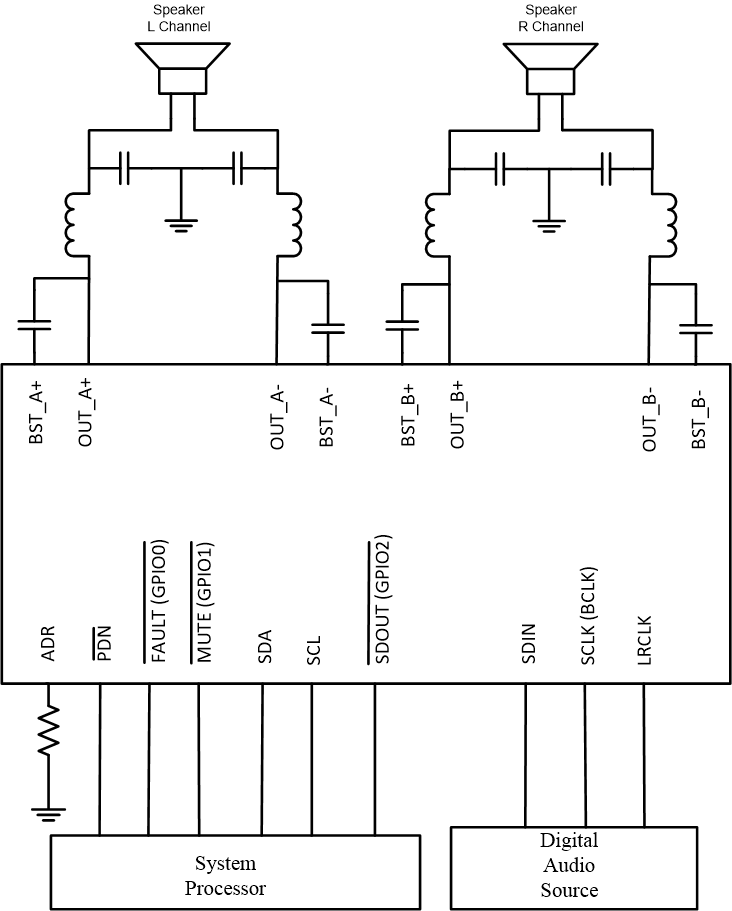ZHCSO77A June 2021 – December 2021 TAS5828M
PRODUCTION DATA
- 1 特性
- 2 应用
- 3 说明
- 4 Revision History
- 5 Pin Configuration and Functions
- 6 Specifications
- 7 Parameter Measurement Information
-
8 Detailed Description
- 8.1 Overview
- 8.2 Functional Block Diagram
- 8.3 Feature Description
- 8.4 Device Functional Modes
- 8.5 Programming and Control
- 8.6 Register Maps
- 9 Application and Implementation
- 10Power Supply Recommendations
- 11Layout
- 12Device and Documentation Support
- 13Mechanical, Packaging, and Orderable Information
3 说明
TAS5828M 是一款立体声、高性能闭环 D 类放大器,具有集成的音频处理器和高达 192kHz 的架构。
软件控制模式启动后,TAS5828M 不仅实现了经典的 BQ、3 频带 DRC 和 AGL,还实现了 Hybrid-Pro 专有算法。Hybrid-Pro 算法可检测即将发生的音频功率需求,并通过 Hybrid-Pro 反馈引脚 (HPFB) 为前直流/直流转换器提供 PWM 格式控制信号。TAS5828M 支持用于可预测的包络跟踪、高达 4ms 的音频信号延迟缓冲器,这有助于防止因直流/直流电压调整而导致的音频削波。在设置为硬件控制模式时,TAS5828M 通过引脚配置支持开关频率、模拟增益、BTL/PBTL 模式和逐周期电流限制阈值。此模式专为免去终端系统软件驱动程序集成工作而设计。
器件信息
| 器件型号 | 封装(1) | 封装尺寸(标称值) |
|---|---|---|
| TAS5828M | TSSOP (32) DAD | 11.00mm × 6.20mm |
(1) 如需了解所有可用封装,请参阅数据表末尾的可订购米6体育平台手机版_好二三四附录。
 简化版原理图
简化版原理图